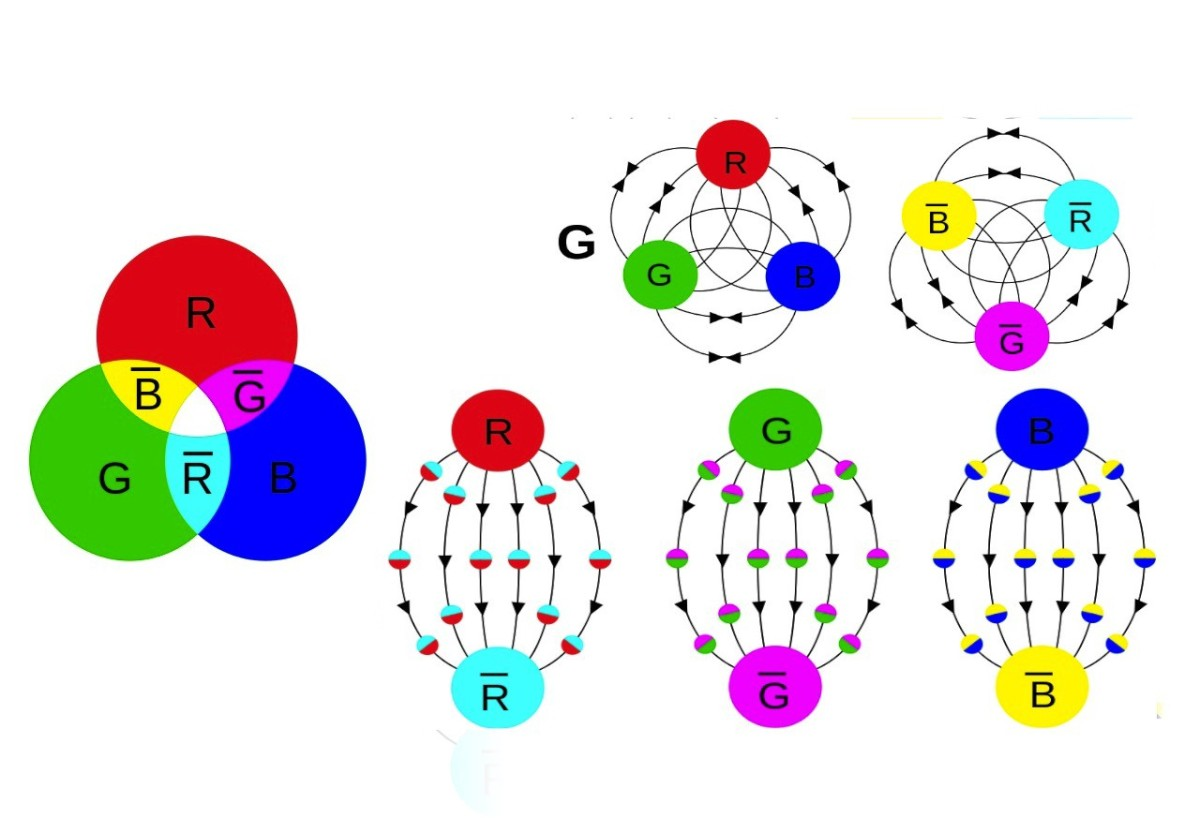Axions have emerged as tantalizing candidates in the quest to solve one of the most puzzling mysteries of our universe: dark matter. These hypothetical particles, proposed by physicists to explain the unseen mass that constitutes much of the cosmos, may play a crucial role in our understanding of particle physics. Recent breakthroughs in the study of axion quasiparticles have opened new avenues for utilizing advanced quantum technologies to detect these elusive entities. Researchers have demonstrated that by employing materials like manganese bismuth telluride, axions can potentially be confirmed, illuminating the hidden fabric of our universe. This exciting development not only sheds light on dark matter but also paves the way for innovations in quantum physics and related technologies.
In the realm of theoretical physics, axions are often discussed as fundamental constituents that may provide explanations for dark matter, the invisible substance filling the universe. These elusive particles, alongside their quasiparticle counterparts, are thought to hold the key to understanding a significant portion of the universe’s mass. Terms like ‘quantum particles’ and ‘mysterious subatomic entities’ frequently arise in conversations surrounding their potential impact on particle interactions. Recent explorations have highlighted the significance of advanced materials such as manganese bismuth telluride in the detection and manipulation of these quantum phenomena. The ongoing investigation into axions represents a promising frontier for expanding our knowledge of both particle physics and cosmology.
Understanding Axions: The Building Blocks of Dark Matter
Axions are theoretical particles that have captured the imagination of physicists due to their potential role in explaining dark matter. These elusive particles could help fill the gaps in our understanding of the universe’s mass distribution. As such, they stand at the forefront of research in particle physics. Their existence was first proposed to resolve issues in the quantum chromodynamics theory, particularly the strong CP problem, but they have since gained attention for their possible contributions to dark matter, which is thought to make up about 85% of the universe’s mass.
Recent studies suggest that axions might not only provide an explanation for dark matter but also introduce new avenues for technological advancements. By harnessing the unique properties of axion quasiparticles, researchers can create cutting-edge devices that operate on quantum principles. This research could lead to the development of new quantum technologies, including precise sensors and advanced communication systems, highlighting the profound implications that the confirmation of axions would hold for both science and technology.
Axion Quasiparticles: Bridging Theory and Experiment
In a significant breakthrough, recent experiments have shown that axion quasiparticles can be used as a method to detect dark matter. Researchers, including a team from Harvard University and King’s College London, have manipulated manganese bismuth telluride to create conditions conducive for these quasiparticles to exist and behave as predicted. By utilizing advanced techniques in laser optics and nano-fabrication, this experimental work not only confirms theoretical predictions but also transforms the abstract notion of axions into observable phenomena, pushing the boundaries of condensed-matter physics to new heights.
The approach utilized in the experiments demonstrates the power of interdisciplinary collaboration, merging insights from particle physics, quantum mechanics, and material science. The researchers were able to creatively simulate the presence of dark matter axions through these quasiparticles, paving the way for future experiments aimed at directly detecting dark matter. By tuning into specific frequencies emitted by natural axion particles, scientists hope to unveil the enigmatic presence of dark matter lurking within the cosmos.
The Role of Quantum Technologies in Dark Matter Research
Quantum technologies are set to revolutionize the way we study fundamental particles and their interactions. The development of methods to detect axion quasiparticles represents a fusion of quantum mechanics and particle physics that promises new insights and refinements in experimental techniques. As researchers leverage the sophisticated properties of materials, such as manganese bismuth telluride, they are laying the groundwork for the next generation of quantum sensors capable of measuring quantities previously thought to be beyond reach.
Utilizing axions has transformative potential in manipulating light and matter interactions, leading to innovative optical applications. Moreover, the growing intersection of quantum technologies with particle physics suggests a promising future where the identification and understanding of dark matter become attainable goals. The ongoing research on these fronts will undoubtedly contribute to answering some of the most pressing questions about the universe.
Manganese Bismuth Telluride: A Material with Unique Properties
Manganese bismuth telluride has emerged as a focal point in the search for dark matter due to its unique electronic and magnetic properties. By manipulating this material into a two-dimensional crystal structure, scientists have created a robust platform for nurturing axion quasiparticles. This manipulation involved sophisticated nano-fabrication techniques, highlighting the material’s complexity and the precision required to achieve desired outcomes in quantum experiments.
As researchers continue to explore the capabilities of manganese bismuth telluride, its rich material properties will undoubtedly facilitate advancements in understanding both axionic phenomena and broader applications in quantum electronics. This material serves as an excellent example of how advanced materials can fundamentally alter experimental physics and lead to breakthroughs in dark matter research.
The Breakthroughs in Particle Physics and Cosmology
The latest findings in axion research represent a significant turning point in the fields of both particle physics and cosmology. By confirming the prediction of axions and achieving observable evidence through quasiparticle dynamics, scientists can now pursue more directed searches for dark matter. Such breakthroughs enhance our theoretical frameworks and provide a means of testing the fundamental properties of dark matter particles, thereby expanding our understanding of the universe’s composition.
As axions join the ranks of other quasiparticles, physicists begin to envision new experiments that could lead to greater insights into cosmic phenomena. This renewed focus on axions not only fuels excitement within the scientific community but also drives interest in exploring the applications of these findings in broader scientific contexts, forging new paths in both theoretical and applied physics.
The Future of Dark Matter Detection
The future of dark matter detection looks promising as research on axions progresses. Scientists are optimistic that through experiments designed to detect the radio frequencies emitted by axions, they may finally unravel some of the long-standing mysteries surrounding dark matter. As the technology evolves, the refined techniques and equipment could lead to unprecedented sensitivity and accuracy, allowing researchers to capture signals of dark matter that have so far eluded detection.
This ongoing quest for understanding dark matter via axions illustrates the complex interplay between theory and experimental physics. Researchers are making strides toward the goal of designing groundbreaking dark matter detectors that may transform our comprehension of cosmic structures and the fundamental workings of our universe. The anticipated results of these efforts will not only enhance the scientific narrative but also continue to advance the broader field of particle physics.
Interdisciplinary Collaboration: A Key to Scientific Progress
The success of the recent axion experiments underscores the importance of interdisciplinary collaboration among researchers from various fields. By integrating expertise from condensed-matter physics, material chemistry, and high-energy physics, scientists have been able to push the boundaries of knowledge. Such collaboration enables innovative approaches to tackle complex problems, as seen with the development of new technologies that leverage quantum mechanics.
Moving forward, fostering interdisciplinary partnerships will be essential as researchers refine experimental methods and explore the intricate properties of axion quasiparticles. This collaborative spirit not only enhances the reliability of results but also creates an environment conducive to groundbreaking discoveries, further solidifying the foundation for future advancements in dark matter research and beyond.
The Significance of Axions for Modern Physics
Axions represent a substantial theoretical advancement for modern physics. Their potential to address unanswered questions about dark matter and the prevailing structure of the universe places them at the center of contemporary research. The exploration of axions can lead to a profound understanding of the fundamental forces that shape our reality and contribute to the unification of physical laws.
Additionally, confirming the existence of axions could link various aspects of particle physics with cosmological implications, emphasizing the interconnectedness of different realms of physics. By shedding light on axions, researchers can unveil details about energy, mass, and the fabric of space-time itself, fundamentally altering our comprehension of the cosmos.
Evolution of Dark Matter Theories
The evolution of dark matter theories has progressed significantly since the inception of axion concepts. Initially a speculative idea, axions have developed into central components of theoretical frameworks attempting to explain the cosmos’s vast mysteries. The continuous refinement of dark matter models has integrated novel findings about particle interactions, leading to an enriched understanding of the universe.
With advancements in experimental techniques, researchers can better test and validate these theories, making progress toward confirming or refuting the presence of axions. As the quest intensifies, the landscape of dark matter research will continue to evolve, potentially reshaping our understanding of cosmic history and the fundamental structure of reality.
Innovations in Detection Technology
Innovations in detection technology are critical to the success of ongoing dark matter research, particularly concerning axions and their quasiparticles. The team’s recent work highlights the potential of ultrafast laser optics and advanced measurement tools, which have proven essential in capturing the dynamics of axion quasiparticles. By enhancing detection methodologies, scientists can improve the accuracy and sensitivity of experiments, leading to unprecedented insights into dark matter.
As technology continues to evolve, future detection systems for dark matter will likely incorporate a variety of innovative approaches. The integration of state-of-the-art techniques and materials will foster a new age of exploration in particle physics, where previously inaccessible aspects of the universe could be revealed. This progress reinforces the notion that advancements in technology not only aid in theoretical development but also act as catalysts for groundbreaking discoveries.
Frequently Asked Questions
What are axions and how do they relate to dark matter?
Axions are hypothetical particles that are proposed as a solution to some fundamental questions in particle physics, particularly regarding dark matter. Dark matter is an unseen component of the universe that is believed to account for about 85% of its mass. The existence of axions could help explain the nature of dark matter, as they are theorized to interact very weakly with regular matter, making them difficult to detect.
How are axion quasiparticles used in research?
Axion quasiparticles serve as simulated models of axion particles, which researchers can use as detectors for actual axion particles. When a dark matter axion interacts with certain materials, it can excite these quasiparticles, allowing scientists to study their properties and potentially confirm the presence of dark matter.
What is the significance of manganese bismuth telluride in axion research?
Manganese bismuth telluride is a material that exhibits unique electronic and magnetic properties, making it an ideal platform for nurturing axion quasiparticles. Through careful nano-fabrication, researchers are able to create a 2D crystal structure of this material, which helps in exploring and detecting axions in experiments.
What modern techniques are being used to study axion quasiparticles?
Researchers are utilizing sophisticated techniques such as ultrafast laser optics and precision measurement tools to observe and capture the dynamic behaviors of axion quasiparticles. These innovative methods allow scientists to visualize previously abstract theoretical concepts, thereby aiding in the search for dark matter.
How could axion research impact future quantum technologies?
The study of axion quasiparticles could lead to significant advancements in quantum technologies. For instance, the interaction between axions and light, known as axion polaritons, may pave the way for novel optical applications, enhancing devices and technologies based on quantum principles.
What potential do axions hold for detecting dark matter?
Axions are believed to emit specific radio frequencies, and by tuning into these frequencies, researchers aim to detect signals from dark matter that have previously eluded detection. This ability to capture dark-matter signals could revolutionize our understanding of the universe and lead to breakthroughs within the next 15 years.
What recent breakthroughs have been made in the search for axions?
Recent experiments conducted by a team from Harvard and King’s College London have showcased significant advancements in detecting axion quasiparticles. By establishing a platform using manganese bismuth telluride, they provided new insights into these particles’ behavior and potential as dark matter detectors, heralding a new era in particle physics research.
Why is interdisciplinary research important in axion studies?
Interdisciplinary research is crucial in axion studies as it combines expertise from condensed-matter physics, material chemistry, and high-energy physics. This collaborative approach facilitates innovative methodologies and experimental designs, leading to breakthroughs in understanding fundamental particles like axions and their role in the universe.
| Key Points |
|---|
| Axions are theorized particles that could explain dark matter, which is crucial for understanding the universe. |
| A recent experiment led by researchers from Harvard and King’s College London has moved closer to confirming axion existence using quasiparticles. |
| Axion quasiparticles can act as detectors for actual dark matter axions when they interact with specific materials. |
| The successful creation of a 2D crystal structure of manganese bismuth telluride allowed researchers to study the properties of axion quasiparticles. |
| This research could lead to new technologies, including advanced dark matter detection methods and optical applications. |
| The ongoing research indicates a rapidly growing interest in axion studies similar to the excitement prior to the Higgs-Boson discovery. |
Summary
Axions are currently a key focus in the search for dark matter, representing a significant advancement in our understanding of fundamental physics. Research led by Harvard and King’s College has demonstrated promising results in the detection and simulation of these elusive particles. This not only furthers the quest for understanding dark matter but could also pave the way for innovative technologies in quantum physics. As studies continue to progress, the potential of axions in uncovering the secrets of the universe remains a thrilling prospect for scientists.




